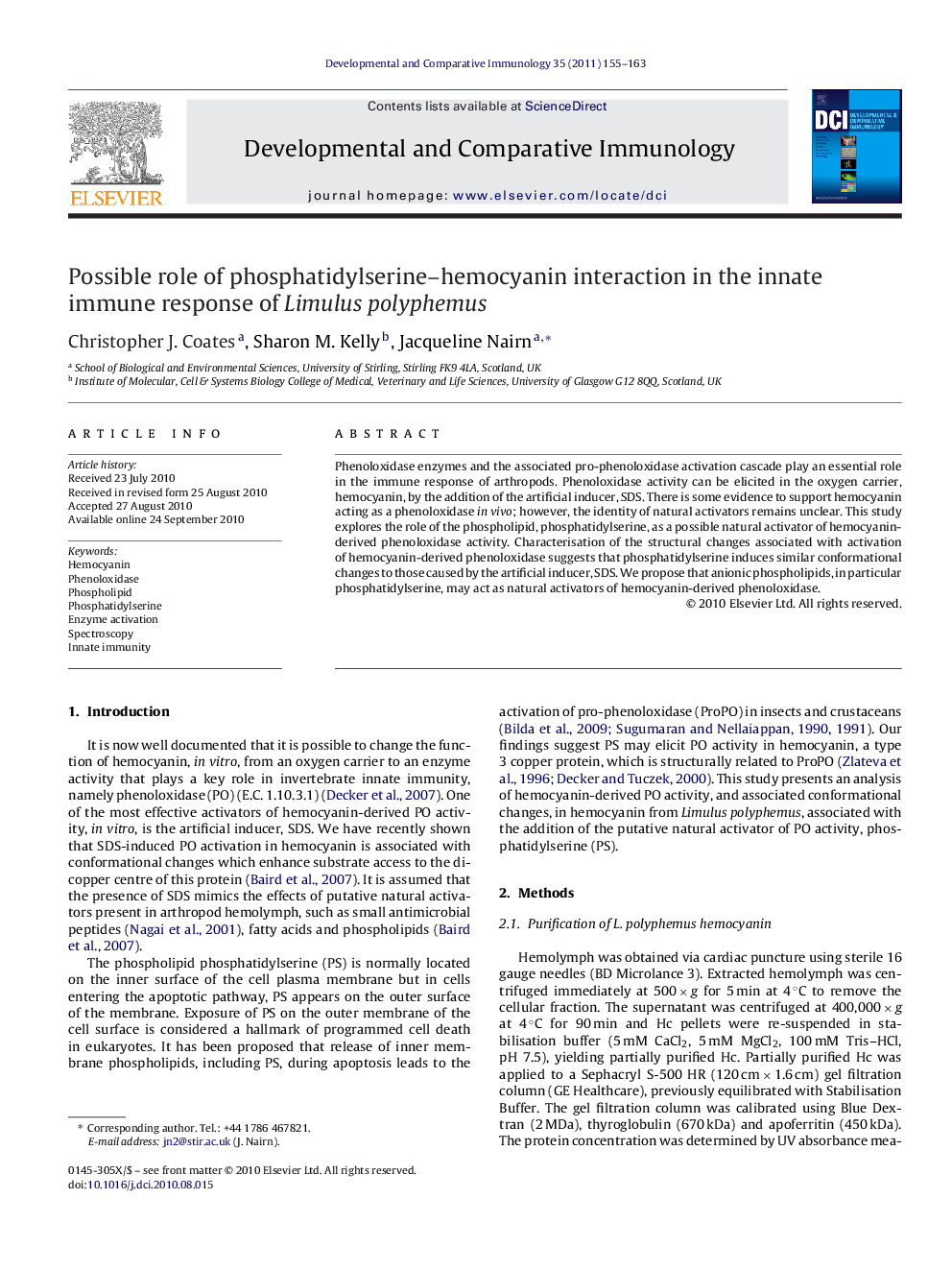| Article ID | Journal | Published Year | Pages | File Type |
|---|---|---|---|---|
| 2429446 | Developmental & Comparative Immunology | 2011 | 9 Pages |
Phenoloxidase enzymes and the associated pro-phenoloxidase activation cascade play an essential role in the immune response of arthropods. Phenoloxidase activity can be elicited in the oxygen carrier, hemocyanin, by the addition of the artificial inducer, SDS. There is some evidence to support hemocyanin acting as a phenoloxidase in vivo; however, the identity of natural activators remains unclear. This study explores the role of the phospholipid, phosphatidylserine, as a possible natural activator of hemocyanin-derived phenoloxidase activity. Characterisation of the structural changes associated with activation of hemocyanin-derived phenoloxidase suggests that phosphatidylserine induces similar conformational changes to those caused by the artificial inducer, SDS. We propose that anionic phospholipids, in particular phosphatidylserine, may act as natural activators of hemocyanin-derived phenoloxidase.
Research highlights▶ Phosphatidylserine (PS) interacts with hemocyanin (Hc) from Limulus polyphemus. ▶ The presence of anionic phospholipids, in particular PS, results in the induction of phenoloxidase activity in hemocyanin from L. polyphemus. ▶ Induction of Hc-derived phenoloxidase activity is accompanied by structural changes. ▶ Changes in activity and structure mimic those induced by the artificial activator SDS. ▶ A possible anionic phospholipid binding site on Hc is identified.
